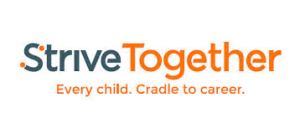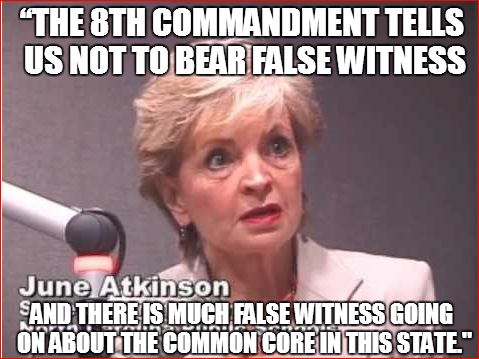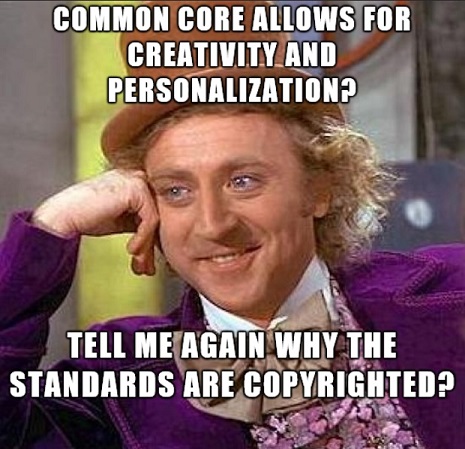It’s “Would You Believe It Wednesday” and I cannot think of a better follow up for this week’s “From the File Tuesday” about SHEEO, the CCSSO, and CCSS than today’s eye-opener of a research paper by the NCPSR (National Center for Post Secondary Research) describing in detail the purposed implementation of CCSS!!

In our above photo we see a young lady, possibly a college age student. Today’s post is for you, sweetie, and the millions just like you. Desiring to move ahead on life’s path, with Common Core standing in your way.
National Center for Post Secondary Research:
In February 2013, a paper was published by the Center about the need for Common Core in post secondary schools. However, let me share just which groups make up the Center before we get into the bullets of truth for today.
1) The Center is comprised of the following schools, organizations: Gates Foundation, Hewlett Foundation, Harvard University, The Community College Research Center, Teachers College, Columbia University, MDRC (formerly known as the Manpower Demonstration Research Council; it’s a education policy group), and the University of Virginia.
2) The Center was founded by funding provided by the U.S. Dept. of Education’s Institute of Educational Sciences.
3) The 2013 “Working Paper” for today’s ‘Would you believe it?’ is titled ‘Common Core State Standards: Implications for Community Colleges and Student Preparedness for College’
The Paper:
Here’s an excerpt from the opening pages, “Based on a review of literature and on interviews with individuals involved in the CCSS nationally and in Washington, Florida, and Kentucky, this paper outlines the development of the CCSS and the CCSS-aligned assessments, the involvement of higher education representatives in their design and implementation, and how the CCSS and the aligned assessments can be used to support the mission of community colleges.”
The introduction goes on to state the 2 national assessments will be used, later in the paper, they will be announced, but I think you can guess, right? PARCC and SBAC. The paper will go on to state that standards haven’t been consistent and that has posed a problem. If you’ll remember I wrote my very first “Tech Thursday” post about the “Adult CCSS” and how the Common Core was intentionally chosen. (see 9/4/14’s “Common Core After High School, a Reality Check”)
Pages 3 and 4 highlight some “College and Career Readiness” Partnerships, but not to the extent yesterday’s post did.
You’ll find the research questions used in this study on page 9, and below:
1. “What role has higher education played in the development and
implementation of the Common Core State Standards (CCSS) and aligned
assessment systems?
2. How is the implementation of the CCSS and their aligned assessment
systems unfolding in three selected states? What has been the role of higher
education in these states?
3. What are the policy and practice implications for community colleges of the
CCSS and their aligned assessment systems, particularly in light of recent
research by CCRC and others?”
The three data sources for the results of the above questions?? The 3 groups we learned about yesterday!! The CCSSO (Chief Council of State School Officers), the SHEEO (States Higher Education Executive Officers), and the AASCU (American Association of State Colleges and Universities).
Note: the 3 selected states are FL, WA, and KY, see their side by side comparison of implementation, complete with details notes, on page 20. I’ve included a few highlights from the 3 states below:
1) Florida’s role in the CCSS implementation process for higher ed, “Both the Florida College System, which consists of 28 community and state (four-year) colleges, and the 12 public universities that make up the Florida State University system have been involved from the beginning with alignment discussions related to the PARCC assessments. “ Followed by, “A Florida state statute maintains that high schools must administer a college readiness
assessment in 11th grade to students that score within a certain range on the state assessment exam, the Florida Comprehensive Assessment Test (FCAT 2.0). School districts may use any Florida State Board of Education–approved assessment, and many districts have chosen the Postsecondary Education Readiness Test (PERT) for this purpose. If a student does not attain the college-ready cutoff score on the PERT, she is required to take college postsecondary preparatory instruction, called College Success and College Readiness courses. This set of courses is comprised of college developmental education courses offered at the high school level and is aligned to the CCSS and to college-level competencies.”
2) KY’s role in the CCSS implementation process for higher ed, “The appearance of the CCSS was timely for Kentucky. In 2009, legislators enacted a new state law, Senate Bill 1 (SB1), which required the state to revamp both its standards and assessments by spring 2012. SB1 included a mandate that the Kentucky Council on Postsecondary Education (CPE), the Kentucky Board of Education (KBE), and the Kentucky Department of Education (KDE) collaborate to create a unified college and career readiness plan that would lead to a reduction in remediation rates and an increase in college graduation rates (Kentucky Council on Postsecondary Education, 2013)” Following that, “…. implications of the CCSS for universities and two-year colleges, such as how these new standards would impact the teaching of introductory-level general education courses. Among the three states profiled for this study, Kentucky was the only state where those interviewed reported that the higher education sector had played a substantial role in reviewing and providing feedback on the drafts of the CCSS.” Then, “The higher education sector was also involved in developing a statewide definition of college and career readiness, also required by SB1.”
3) Washington’s role in the CCSS implementation process for higher ed, “According to a state higher education official, the higher education sector played no formal role in the early stages of the adoption process for the standards and, outside of connections to teacher education programs, there had been minimal outreach to higher education representatives to participate. However, they have become more involved with the
CCSS implementation process in recent months. Washington, like Florida, partners with Core to College to encourage K–12 and high education alignment activities.”
Key to the 3 states are funding, legislation, and timing in the successes or setbacks in implementing CCSS in higher education. Beginning on page 33 is how the other states will be impacted, if they haven’t been already. This encompasses ‘dual enrollment’ programs (in NC, it’s called “Career and College Promise”), on-line classes, and more! On page 36, see how the community colleges curriculum will change, if it hasn’t already. Here in NC, all the community colleges are already aligned to CCSS, textbooks, assessments, and lesson plans all reflect it. **Note, if you have a student in a community college, ask to see the textbooks, the on-line portions of their course work OR have them understand what to look for in regards to CCSS aligned materials! I have a community college student, I’ve seen the textbooks..they are NOT better, in spite of what we’ve been told. Professors HATE teaching the CCSS at this particular school, but must or they have no job!
On page 38, the CCSS alignment between high schools and community colleges via partnerships begins. From the Appendices (you’ll really want to look there), is this lovely note, “Only seven states (Georgia, Kentucky, Maryland, Massachusetts, New York,
North Carolina, and West Virginia) have completed plans in all three areas
(Porter et al., 2012).” This is in reference to where are the other states in the process of implementing and aligning to CCSS in higher education. Link to the entire study: http://www.postsecondaryresearch.org/i/a/document/25958_common-core-state-standards_2.pdf
The MDRC:
I’m highlighting this organization because while it’s a partner in all this, it’s one we know very little about. Not anymore!
The formerly named “Manpower Demonstration Research Council” was created back in 1974 by the Ford Foundation and a select group of federal agencies. In 2003, the group trademarked a new name, “MDRC”. It’s non partisan, non profit. MDRC address education and social issues especially when impacting the low-income population. You’ll want to see the rest of their history and where they’ve worked (hint: more than the USA). See: http://www.mdrc.org/about/about-mdrc-history
Among its Board members are representatives from pro Common Core schools or organizations such as the Brookings Institute and Harvard. (there are others, too).
Among the funders are the following Federal agencies,
- U.S. Department of Agriculture
- U.S. Department of Defense
- U.S. Department of Education
- U.S. Department of Health and Human Services
- U.S. Department of Labor
- U.S. Social Security Administration
- National Institutes of Health, National Institute of Child Health and Human Development
Known and identified pro Common Core supporters:
The National Governors Association, The Joyce Foundation, Carnegie Corporation, Knowledge Works, The Gates Foundation, AIR (American Institutes for Research) HOWEVER, there is an incredible amount of support via many other organizations, public and private! See the entire list of shame, http://www.mdrc.org/about/funders-mdrcs-projects
Their report, published in 2011, focused on ‘career focused learning community’. Also in conjunction with the NCPR. Helping fund the paper among our known supporters, was the MDRC Endowment.
“Contributors to the MDRC Endowment include Alcoa Foundation, The Ambrose Monell
Foundation, Anheuser-Busch Foundation, Bristol-Myers Squibb Foundation, Charles Stewart Mott Foundation, Ford Foundation, The George Gund Foundation, The Grable Foundation, The Lizabeth and Frank Newman Charitable Foundation, The New York Times Company Foundation, Jan Nicholson, Paul H. O’Neill Charitable Foundation, John S. Reed, Sandler Foundation, and The Stupski Family Fund, as well as other individual contributors.”
Why this study bears investigating: 21st Learning Communities are a very real threat to our American way of life. I’ve written about them, so have others. It’s a portion of the Agenda 21, global mindset where a school becomes more than a learning institution, but the community center where every service is offered. With “Knowledge Works” involved (see above) I’ve seen their ideal of the “Strive Together” communities, 90 strong already in working order across the US. “Cradle to Career for EVERY Student” is their mindset.
Link to the MDRC’s study: http://www.mdrc.org/sites/default/files/Breaking%20New%20Ground%20ES.pdf

In Closing:
If you didn’t find your state community colleges listed, don’t relax for a minute! Remember the Career Pathways are ALSO in our community colleges and high schools. As you have learned 4 year high education institutions ARE not EXEMPT from Common Core!


4 thoughts on “WYBI Wednesday: National Center for Post Secondary Research and CCSS”